Distributed cellular core network
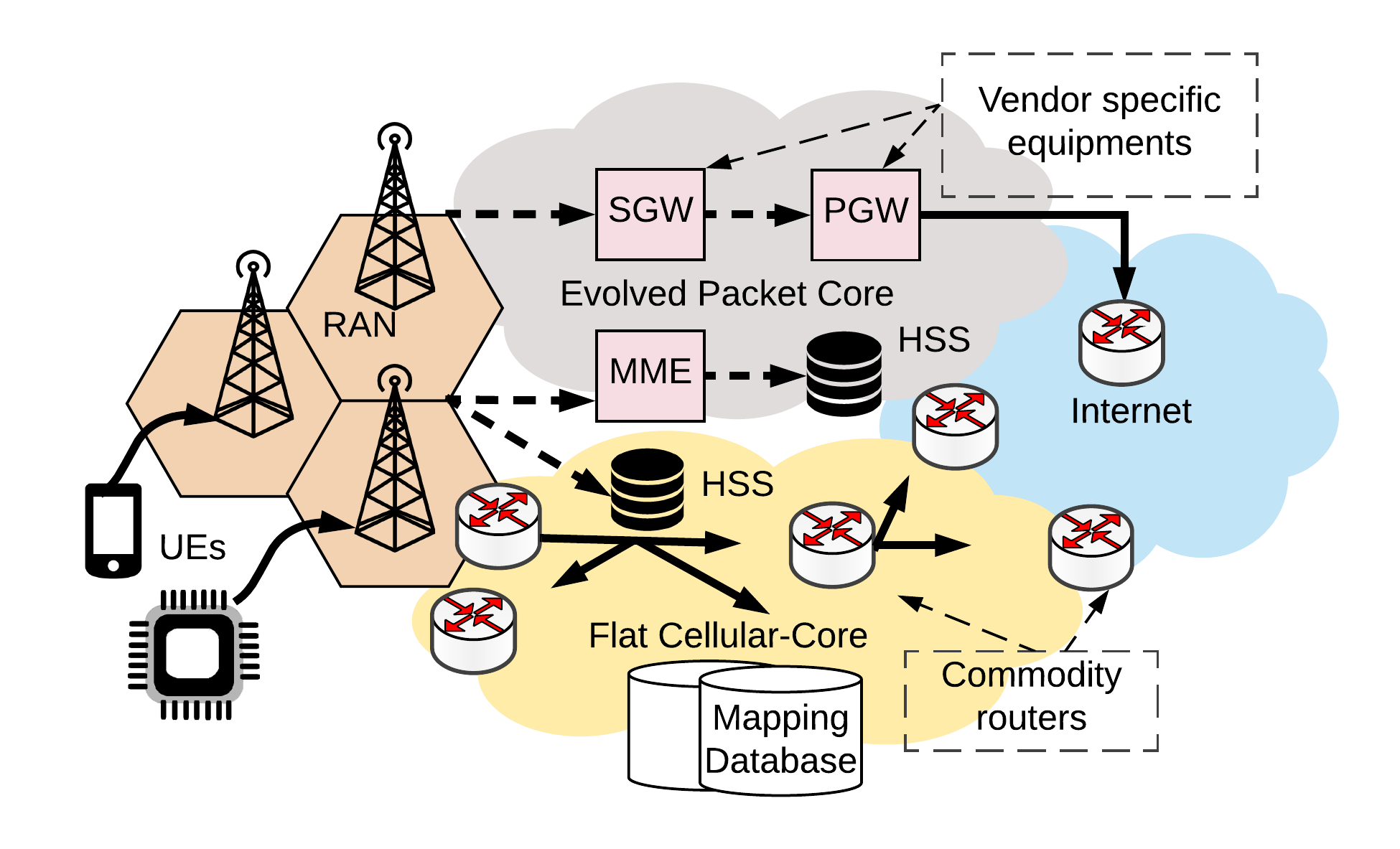
This work presents a distributed core network architecture for use in future cellular systems. It addresses the performance bottlenecks and latency associated with the centralized control and data gateways used in today's mobile core networks. A fully distributed architecture for the mobile core is realized through the use of identifier-based protocol extensions to IP which run on base stations (eNodeB) and routers without the need for centralized gateways. The resulting "flat" mobile core network is capable of supporting a variety of mobility and IoT services with significantly lower latency and improved throughput relative to current solutions.
Links: NEAT Paper
Collaborators: Ravishankar Ravindran (Huawei Research), Dipankar Raychaudhuri (Rutgers)
Scalable inter-domain multicast
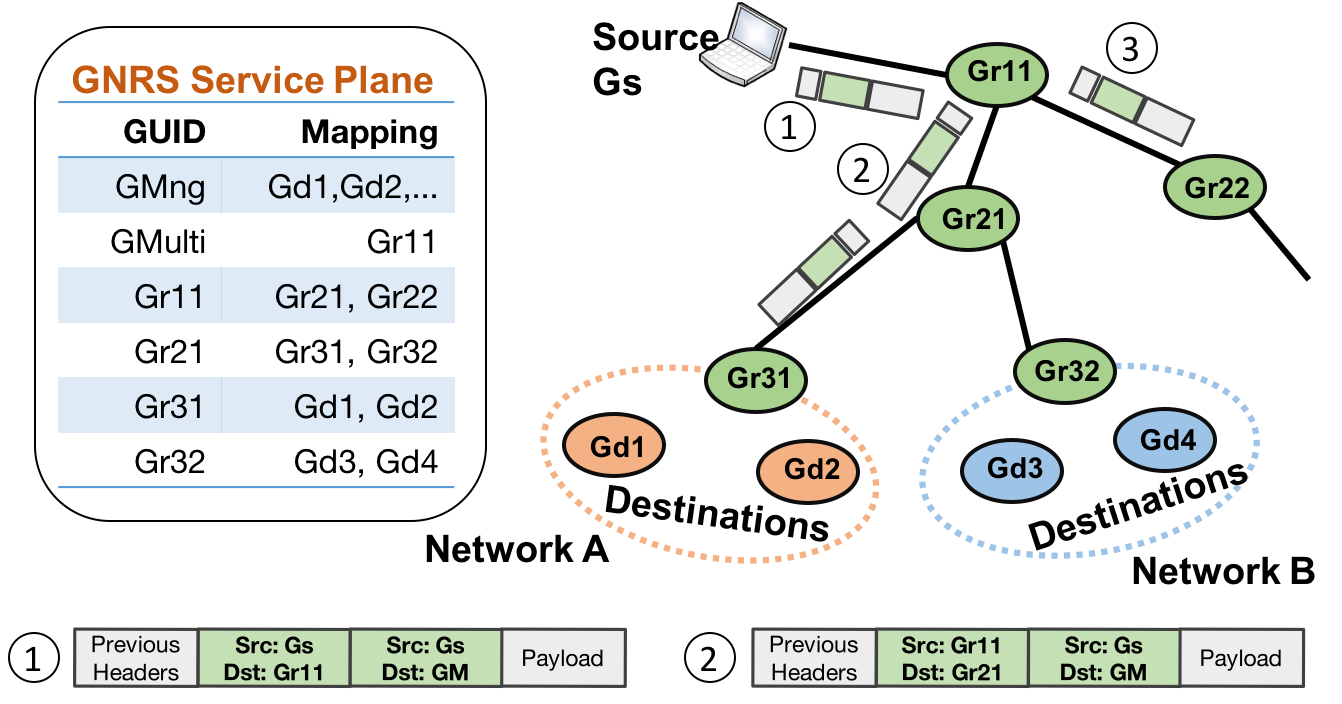
This work proposes a scalable push based named object multicast (NOMA) scheme utilizing a global name resolution service (GNRS) for storing inter-domain multicast trees. The proposed framework can run any multicast tree-generation algorithm and allows mobile receivers to seamlessly join and leave a group without loss of data.
Links: Globecom Paper
Collaborators: Francesco Bronzino, Suja Srinivasan, Jiachen Chen, Dipankar Raychaudhuri (Rutgers)
Edge-aware inter-domain routing
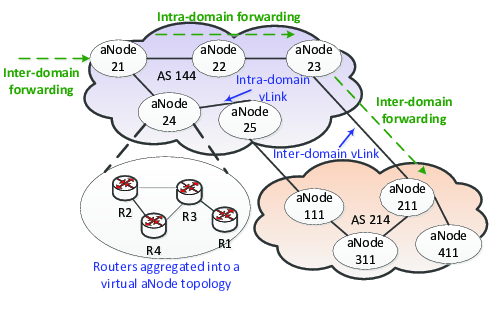
Edge-aware inter-domain routing (EIR) is a routing protocol based on aggregated nodes (aNodes) and virtual links (vLinks) which are abstractions to expose internal network topology of an autonomous system (AS). EIR provides flexibility in the granularity of aggregation as well as mechanisms to dampen link-state overhead through telescopic flooding.
Links: Computer Networks Paper, ICC Paper, Slides presented at the WINLAB Industrial Advisory Board Dec'14
Collaborators: Shravan Sriram (VMTurbo), Tam Vu (UC Boulder), Ivan Seskar, Dipankar Raychaudhuri (Rutgers)
Network-assisted multihoming
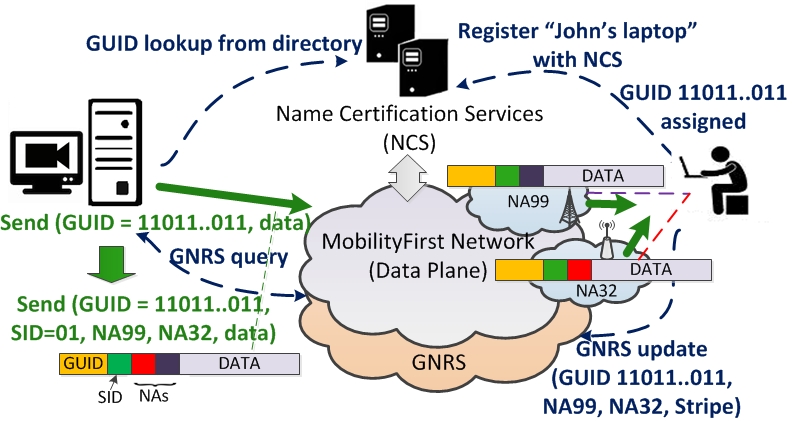
This work analyses a network-assisted technique for multihoming based on the MobilityFirst (MF) future internet architecture. The proposed algorithm uses a per-flow hop-by-hop in-network backpressure for sending data across multiple interfaces and a robust mechanism to reduce reordering of packets at the receiver.
Links: MS Thesis, PIMRC Paper
Collaborators: Akash Baid (Affirmed Networks), Parishad Karimi, Ivan Seskar, Dipankar Raychaudhuri (Rutgers)
Vehicular networking
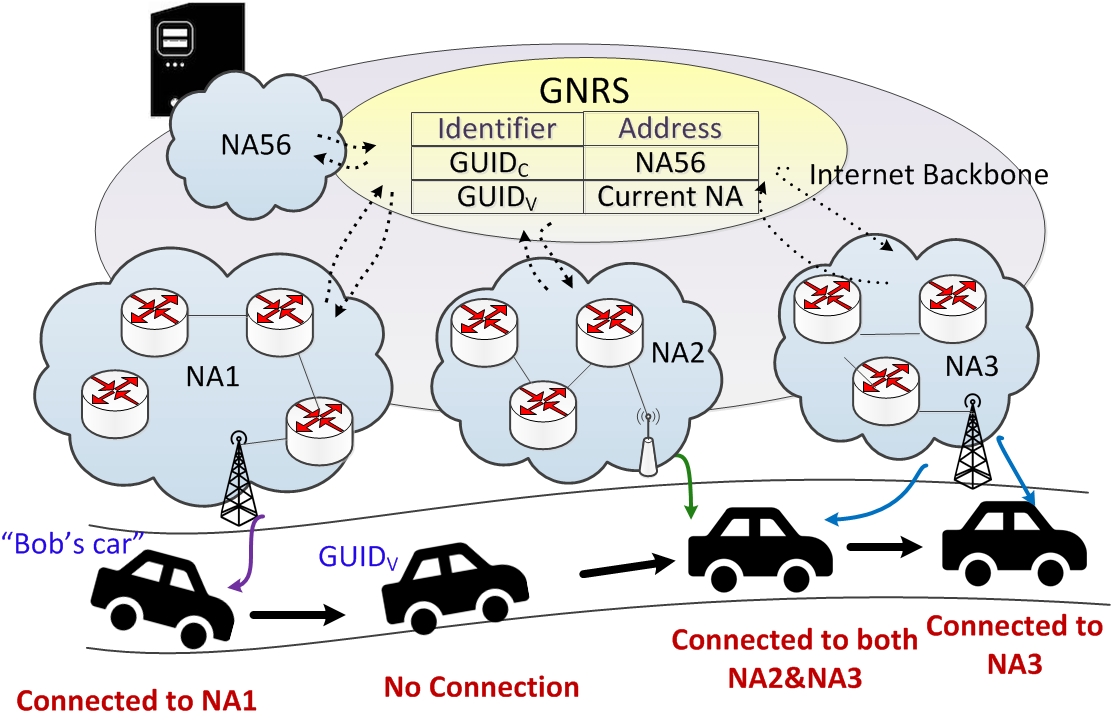
MobilityFirst provides unifying network protocol solutions particularly suitable for delivery of services across a range of vehicular applications, for both vehicle-to-vehicle (V2V) and vehicle-to-infrastructure (V2I) networking. In this work we perform detailed simulations on the performance and scalability of MF architecture components for highly dynamic vehicular scenarios.
Links: WoWMoM Paper
Collaborators: Akash Baid (Affirmed Networks), Kiran Nagaraja (Ericsson), Sandeep Mudigonda, Ivan Seskar, Dipankar Raychaudhuri (Rutgers)